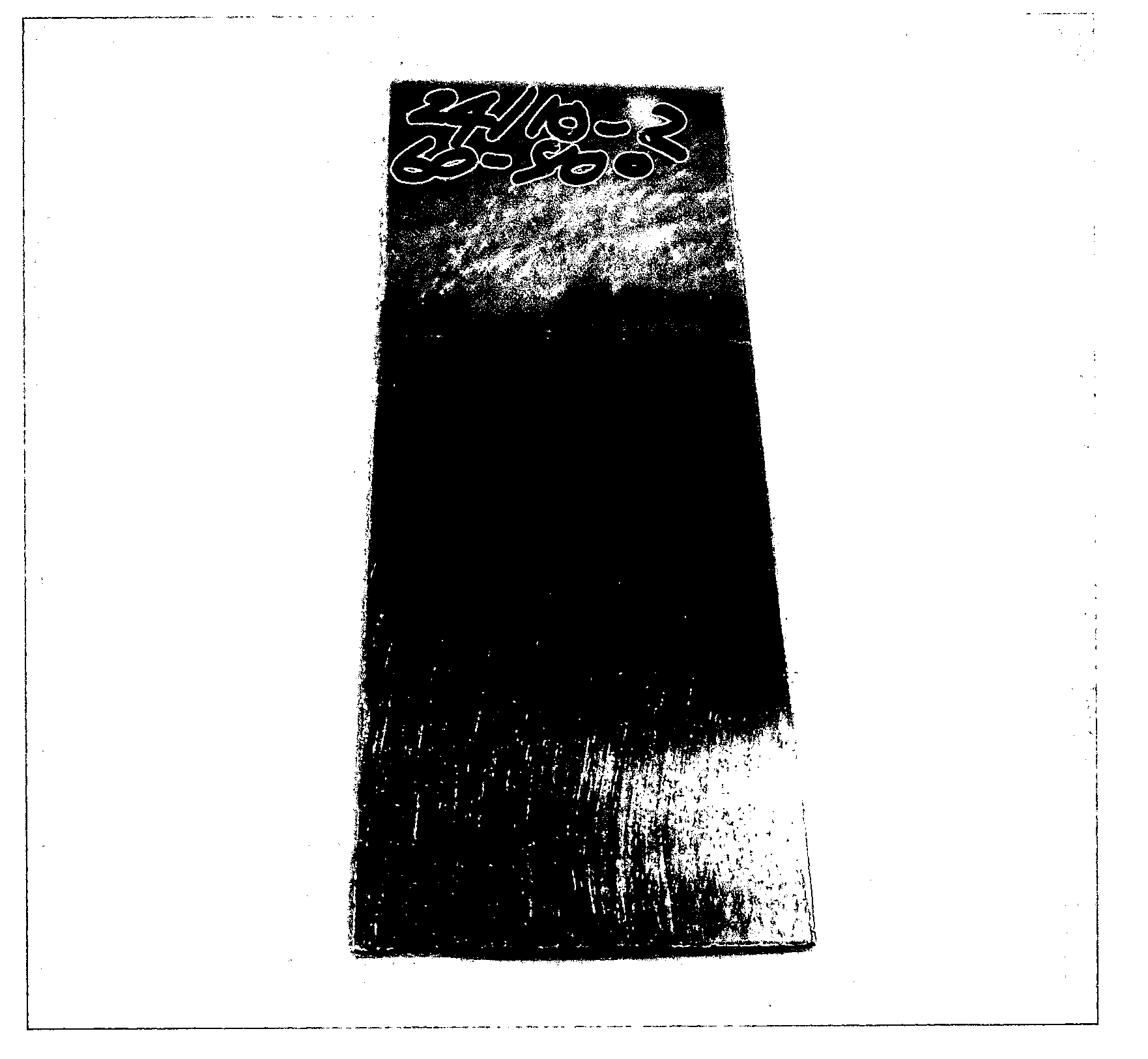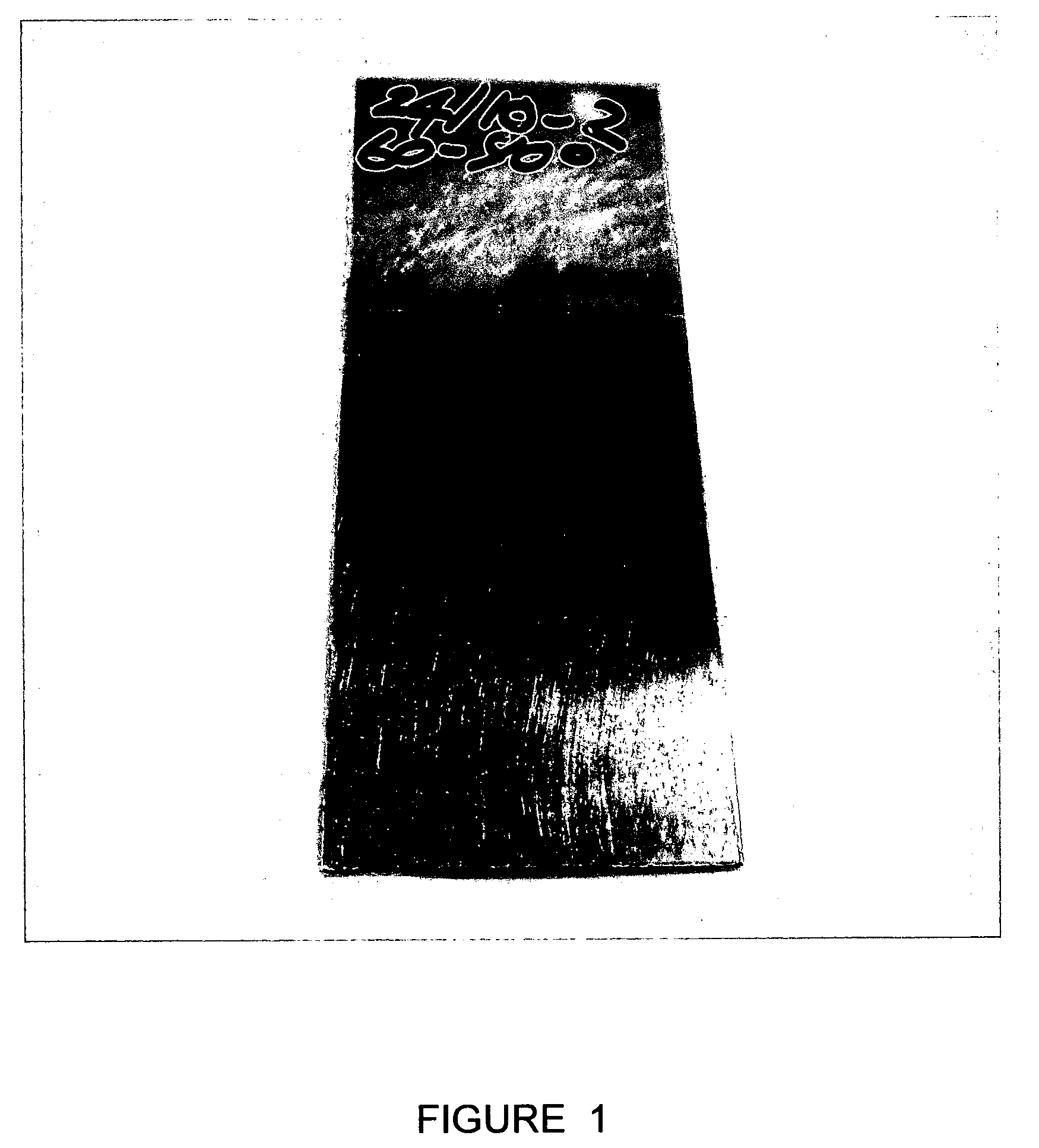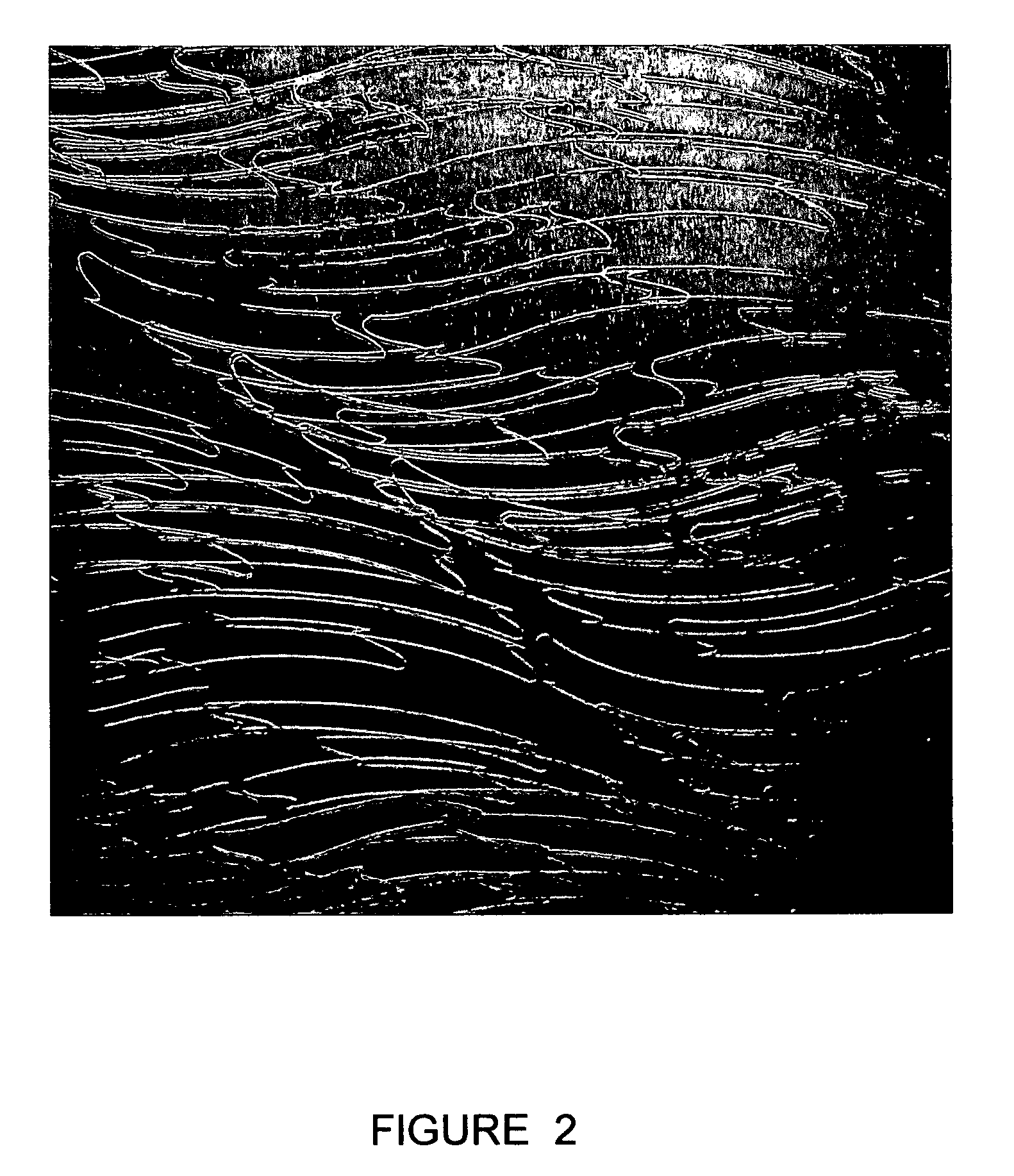Method of colouring tin and tin-containing articles
a technology which is applied in the direction of instruments, heat measurement, indication devices, etc., can solve the problems of comparatively little known regarding the colouring of tin and tin-containing alloys, and the practice of colouring tin-containing articles is by no means as well developed as with many other metals
- Summary
- Abstract
- Description
- Claims
- Application Information
AI Technical Summary
Benefits of technology
Problems solved by technology
Method used
Image
Examples
example 1
[0048]A treatment solution was prepared as follows:
[0049]Ammonium thiosulphate (50 g) was dissolved in distilled water (200 ml) with stirring. Butanone (5 ml) was added and the resulting mixture further agitated. Citric acid was added, again with stirring, until a pH of 5 was achieved. The resulting solution was heated to between 60 to 80° C.
[0050]A sample of pewter was coloured using the solution prepared above, as follows:
[0051]The pewter sample was immersed in the solution with gentle agitation. The sample was periodically removed to observe the change in colour. It was found that the surface of the pewter took up a pale gold colour after immersion in the solution for 1 to 2 minutes. After immersion in the solution for 5 to 10 minutes, the surface colour of the pewter sample was a bright gold.
[0052]The pewter sample was removed from the solution and rinsed in clean, cold water. To prevent the formation of water marks, the sample was rapidly dried using a stream of hot air.
[0053]T...
example 2
[0057]A treatment solution was prepared as follows:
[0058]Sodium thiosulphate (50 g) was dissolved in distilled water (200 ml) with stirring. Copper acetate (12 g) was added with stirring. Acetone (5 ml) was added and the resulting mixture further agitated. The resulting solution was heated to 60° C.
[0059]A sample of pewter was coloured using the solution prepared above, as follows:
[0060]The pewter sample was immersed in the solution with gentle agitation. The sample was periodically removed to observe the change in colour. It was found that the surface of the pewter took on a progression of colours ranging through pale gold, pink, blue and green. The first phase of colour development occurred rapidly, with the later colours in the progression developing more slowly but brighter. Colour development tended to slow at the gold stage. Some blue colour became evident if the sample was left in contact with the solution a little longer. The final colour of the sample was a green / gold colou...
example 3
[0066]A treatment solution was prepared as follows:
[0067]Ammonium thiosulphate (50 g) was dissolved in distilled water (200 ml) with stirring. Copper acetate (12 g) was added with stirring. Acetone (5 ml) was added, again with stirring. The resulting solution was heated to between 50° and 60° C.
[0068]A sample of pewter was coloured using the solution prepared above, as follows:
[0069]The pewter sample was immersed in the solution with gentle agitation. The sample was periodically removed to observe the change in colour. It was found that the surface of the pewter took on a cycle of colour changes from gold to pink to purple to blue then fading to pale green gold. The colour change was rapid with a brighter second colour cycle occurring. The blue / purple colouration appears the most even. The sample was removed at the desired stage of colour development and rinsed in cold water. The sample was rapidly dried in a stream of air then sealed with a clear acrylic varnish.
[0070]The hardness ...
PUM
| Property | Measurement | Unit |
|---|---|---|
| Temperature | aaaaa | aaaaa |
| Percent by mass | aaaaa | aaaaa |
| Percent by mass | aaaaa | aaaaa |
Abstract
Description
Claims
Application Information
 Login to View More
Login to View More - R&D
- Intellectual Property
- Life Sciences
- Materials
- Tech Scout
- Unparalleled Data Quality
- Higher Quality Content
- 60% Fewer Hallucinations
Browse by: Latest US Patents, China's latest patents, Technical Efficacy Thesaurus, Application Domain, Technology Topic, Popular Technical Reports.
© 2025 PatSnap. All rights reserved.Legal|Privacy policy|Modern Slavery Act Transparency Statement|Sitemap|About US| Contact US: help@patsnap.com



